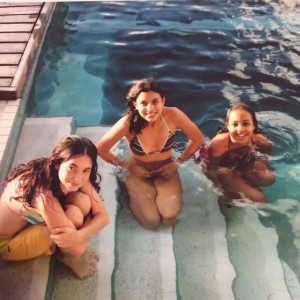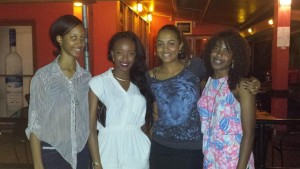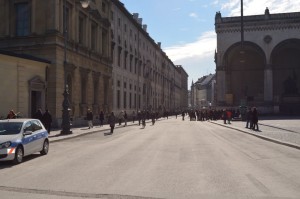Being born in Germany, growing up as a mixed girl in the Caribbean and moving back to Europe in my late teens have been some of the most defining experiences in my life. I know that sounds oddly strange and you’re probably wondering what I mean – and I’ll explain it in a minute.
Backstory
My name is Theresia – Terri for short. My mother is from Trinidad and Tobago and is of African descent while my father is white but half German and half American. I can’t say that race was truly a major topic growing up, however, I can’t say that race wasn’t evident in my daily life. I’ve heard tons of multiracial people expressing how glad they were to not have noticed race growing up until they were confronted at school for example. I think I always knew that my dad was white and my mom was black and that I fit somewhere in the middle. I can honestly say that I’ve never felt 100% at home on either side. Naturally, I could say that I would obviously lean more to my Afro-Tobagonian side, but to say that that’s where I feel truly at home would be a bit much. Now, as many people may or may not be aware, the Caribbean is potentially one of the most multiracial zones in the world. Through centuries of European colonisation, African slavery and Asian Indentureship, it’s safe to say you can find a little piece of each culture here. As the Jamaican national motto goes, “Out of many, one people.”
Growing up in the Caribbean, more specifically Trinidad & Tobago
Now, Tobago is where my mom and dad met, fell in love and got married. However, it was in a little Bavarian town in Germany that I was born. At around 2 and a half, we moved back to Tobago and I started school and race never seemed to be a theme in my life at this stage. As I got older, I had my “school friends” and my friends who I played with on the weekends; these were usually the kids of my parents’ friends – they were often mixed or white. Now, I noticed and was definitely aware of this difference. I spoke differently with each group as if I had to adjust my behaviour to fit in with what I thought was expected or was seen as normal. I still saw myself caught in the middle of these two worlds and was actually really OK with it, because I never felt or saw myself as fully one or the other.
I remember when I moved back from Germany (age 9) for the last time, I had a hard time adjusting to my new primary school. I remember one girl came up to me and said, “You are not better than any one of us, you got that? White German b*tch.” It was a strange time for me and I must say, it troubled me for a while and my “differentness” continued to be apparent to me. I continued to hear little things about my being mixed from family members and even random strangers throughout the years. From people doubting that my mother is in fact my mother, and us having people take our hair to compare to people being shocked when I would say I was from Tobago to some girlfriends in my last year of high school randomly asking me what I identified as, because they never really thought about it but they knew for sure they didn’t see me as “black.” At my high school which was predominantly black, I did get wind of jokes and stereotypes about white people and everybody else in between. I got teased with, “Oh, but Theresia, you know all the white people in Tobago anyway. You all know each other.”
Moving to Munich, Germany aka my current situation
Moving back to Germany in 2014 was the start of yet another life changing journey. Coming from a world where I could openly just be mixed and identify as what I felt I was, it was initially tough just identifying as black. It’s not as dramatic as I’m making it sound, however, it was kind of eye opening to see the difference in culture as well as the way different people were seen racially in Europe. Now the way I understand race and even perceive people on a whole has changed completely. The little distinctions that we notice in the Caribbean – hair texture, eye colour, skin tone and whatever else you can think of – mean nothing almost. In the Caribbean, the situation I had was that hardly anyone I met would just see me as a black girl, whereas in Europe, everyone only sees me as a black woman. There is neither a negative nor a positive connotation to be understood here, it’s just an interesting observation in the way race and identity works around the world. The only difference from being a mixed little girl with the freedom to live in that grey area with no resistance, is that as a grown up (I’m 20), you are no longer just observing the world from a safe place, you have to actively participate in the socio-political arenas of your world, too. This often means confronting issues that you as a “mixed” person may not have seen as your place to get involved in before.
My mixed story certainly doesn’t end here. Identity is fluid and it’s always changing and as our festival founder, Heidi Durrow, once wrote “I am constantly growing, ever-changing, and always trying to learn. My identity is fluid. Today, I am mixed, an African-American Dane. Tomorrow . . . well, you’ll have to check in to see.” This definitely resonates with me – it can never be either or, however, never forget that what you are, doesn’t have to dictate who you are.




